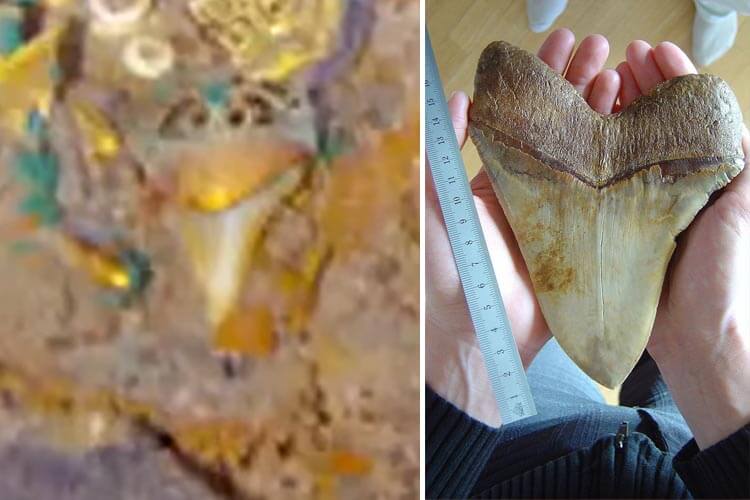
A gold necklace said to have been made with the tooth of a megalodon shark has been located on the wreck of the RMS Titanic in a ‘breathtaking’ discovery by the Magellan search team that has been surveying the wreckage.
Guernsey-based deep-water exploration specialist, Magellan Ltd, has been mapping the wreckage of the Titanic with its documentary-making partner, Atlantic Productions. Together, they produced the first high-resolution 3D model of the ship, which famously sunk to a depth of 3,840m (12,600ft) in the mid-Atlantic Ocean after hitting an iceberg on 14 April, 1912, with the loss of more than1,500 lives.
The wreckage was mapped during a survey conducted by two unmapped submersibles – named Romeo and Juliet – which spent more than 200 hours recording more than 700,000 images to make a ‘digital twin’ of the ship.
The shark-tooth necklace was discovered among the substantial debris field that surrounds the Titanic, the first time it has been properly explored.
You may also be interested in
‘What is not widely understood is that the Titanic is in two parts and there’s a three-square-mile debris field between the bow and the stern, Richard Parkinson, the CEO of Magellan, said in an interview with ITV. ‘The team mapped the field in such detail that we could pick out those details.’
Parkinson described the discovery of the necklace as ‘astonishing, beautiful and breathtaking,’ adding, ‘we found a megalodon tooth which is fashioned into a necklace – it’s incredible, it’s absolutely incredible,’
Other small artefacts discovered among the debris include several pairs of shoes, watches, furniture and unopened champagne bottles. The resolution is so fine that the scans have even been able to identify a serial number on one of the ship’s propellers.
It is unclear if the tooth is genuinely a fossilised tooth from a megalodon, or merely that of a large shark. Otodus megalodon has become something of a mythological creature, with references in popular culture often claiming that specimens still roam the ocean depths.

The myth likely arose from a 1950s study that incorrectly dated fossilised megalodon shark teeth to as recently as 11,000 years ago, although the techniques used were later proven to be unreliable. Megalodon – while definitely a genuine shark, probably the largest to have ever existed – is thought to have died out around 2.6 million years ago.
Catalina Pimiento, a paleontologist at Swansea University who specialises in sharks, told the MailOnline that ‘it’s hard to tell if it’s a megalodon tooth without other identifiable objects for scale.’
‘The tooth seems to have a “neck”, which is the darker area between the tooth crown and the root,’ she said, ‘but because the picture is so low quality, it is hard to see if this is the case.’
Magellan is hoping to use Artificial Intelligence to identify the owners of items found on the sea bed – including the shark-tooth necklace – and inform the descendants of those who died in the sinking.
A joint UK-US agreement on the removal of artefacts from the site, however, prevents the necklace from being recovered.
- Don’t shop – dive! ‘Blue Friday’ celebrates its fifth birthday - 21 November 2025
- Suunto launches new Nautic & Nautic S dive computers - 18 November 2025
- Generations Below – a father-son team working to build a global underwater treasure hunt - 11 November 2025


